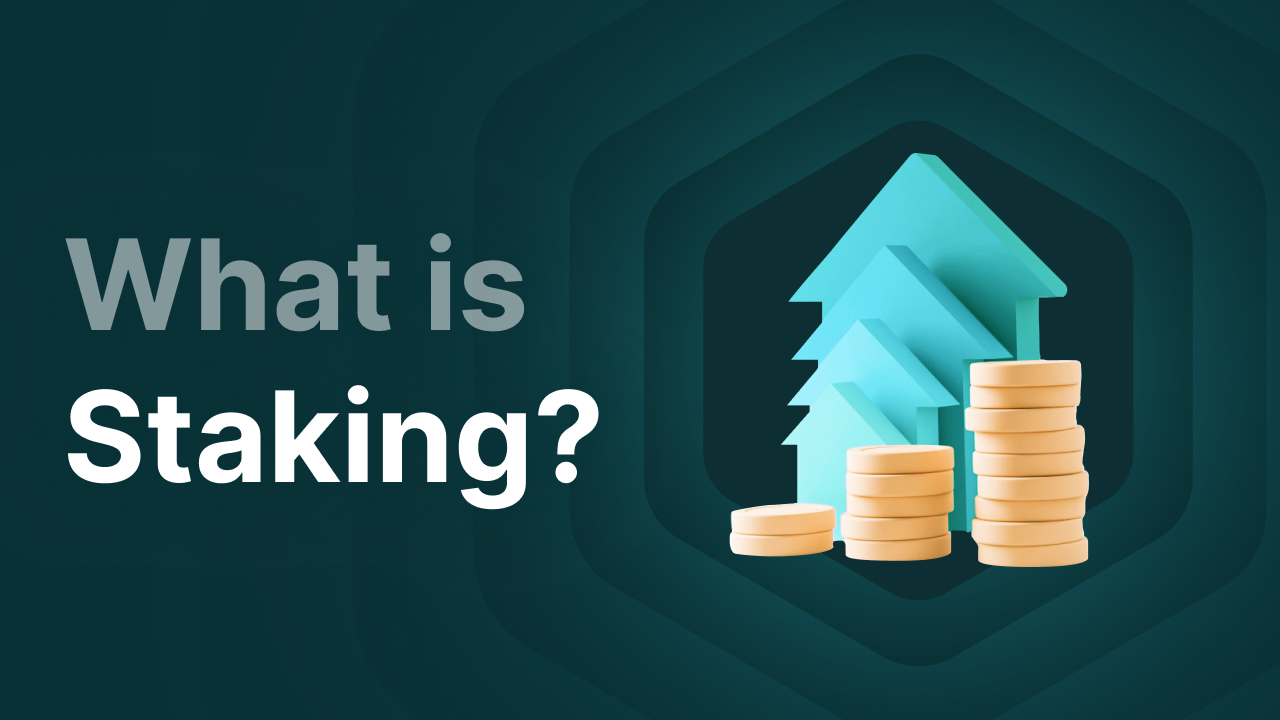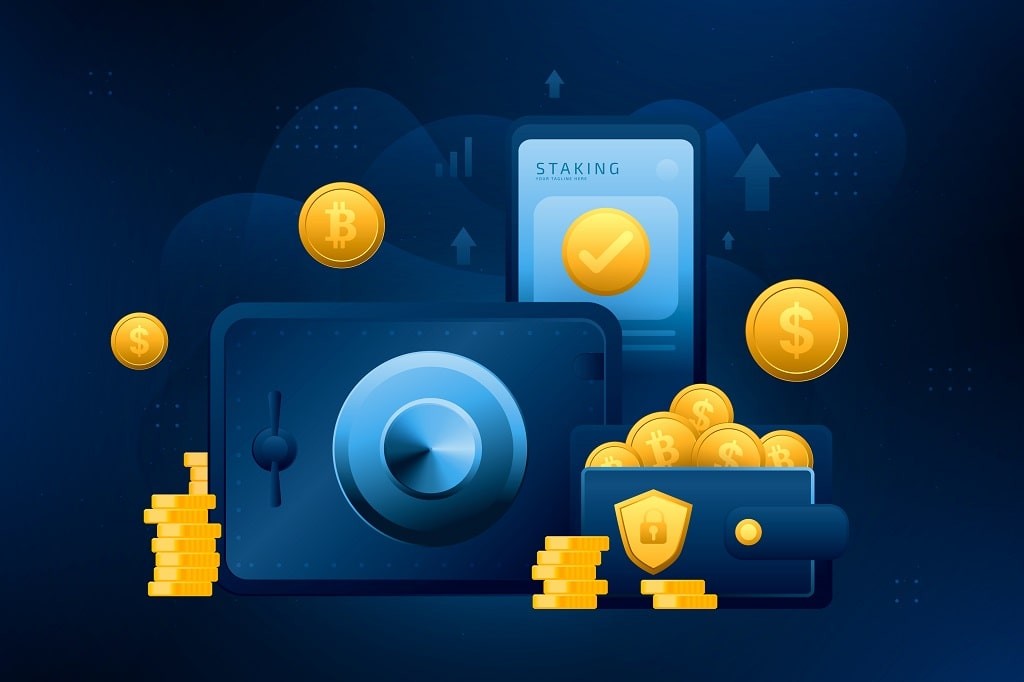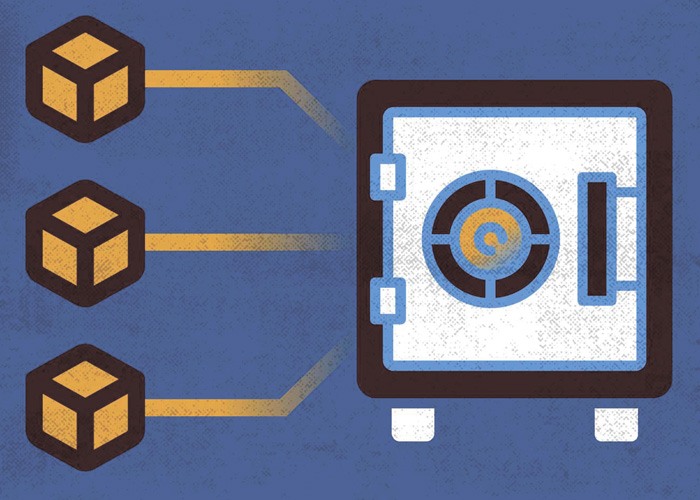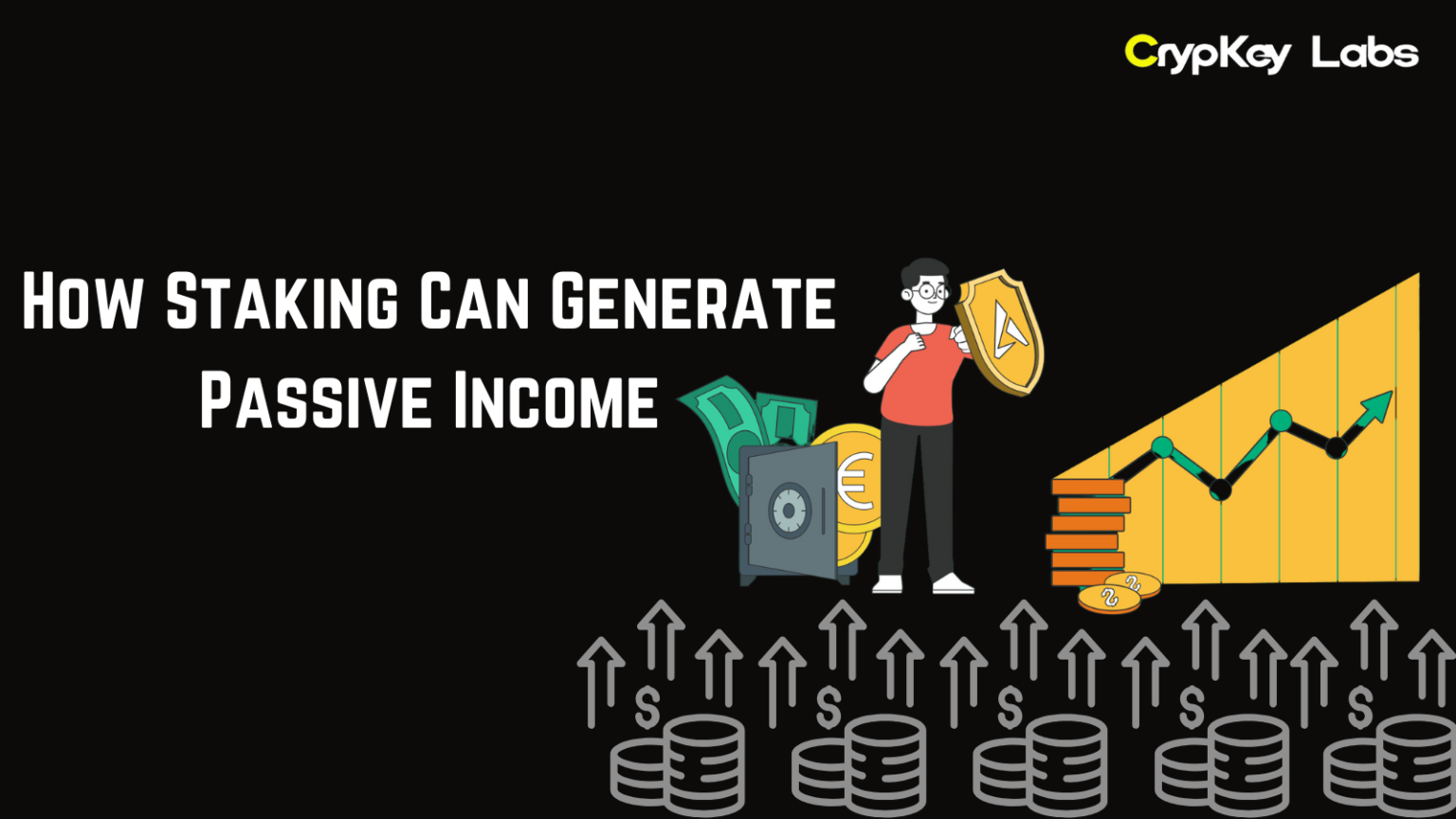If you’ve been exploring the world of cryptocurrency, you’ve probably come across the term “staking” as a way to earn passive income. But what exactly does it mean, and how can it help you grow your wealth while holding onto your crypto? In this blog, we’ll break down how staking works, its benefits, risks, and how you can get started. Let’s dive into how staking can help you generate passive income in the exciting world of crypto!
What is Staking?
At its core, staking is like earning interest on your savings account, but in the world of cryptocurrency. Instead of traditional savings, you lock up your cryptocurrency to support the operations of a blockchain network. In exchange for doing so, you receive rewards in the form of more cryptocurrency—essentially generating passive income.
Staking is most commonly associated with Proof of Stake (PoS) blockchains, where the network relies on users to stake their coins to validate transactions and secure the network. This system contrasts with Proof of Work (PoW), used by Bitcoin, which requires miners to use computational power to validate transactions.
How Staking Works
When you stake your crypto, you’re essentially lending it to the blockchain to help secure the network. This is similar to a savings account where you deposit money, and the bank uses it for loans. The bank then gives you interest for letting them use your money. In staking, your crypto is used by the blockchain to verify transactions, and in return, you earn staking rewards.
The process is pretty straightforward:
- Choose a cryptocurrency to stake: Many PoS blockchains (like Ethereum 2.0, Cardano, and Polkadot) allow staking.
- Lock up your coins: You commit your coins to the network for a set period, where they’re held in a special staking wallet.
- Earn rewards: As the network grows and transactions are verified, you receive staking rewards—usually in the same cryptocurrency you staked.
In simple terms, staking is a way to earn cryptocurrency without needing to trade or actively work for it.
Types of Staking
Not all staking is the same, and there are a few different ways you can go about it. Each has its pros and cons, depending on your goals and preferences.
Solo Staking
Solo staking involves running your own node and directly participating in the blockchain network. While this gives you complete control, it also requires technical knowledge and substantial resources (such as hardware and software). Plus, if you don’t meet the requirements or make a mistake, you could lose some of your staked tokens—this is known as “slashing.”
Pool Staking
If solo staking sounds too complicated, you can join a staking pool. This is where multiple users combine their resources and share the rewards. By staking in a pool, you don’t have to worry about the technical side of things, and you can still earn regular rewards. The downside is that pools often take a small fee for their services.
Staking via Exchanges
If you’re looking for an even easier route, many major exchanges (like Binance, Coinbase, and Kraken) offer staking services. You simply deposit your crypto into the exchange, and they handle the staking for you. While this is the most beginner-friendly option, be mindful that exchanges charge fees and control your crypto.
Benefits of Staking for Passive Income
There are several reasons why staking has become a popular way to generate passive income. Let’s take a closer look at the main benefits:
Earn Regular Rewards
Staking allows you to earn rewards regularly, typically every few days or weeks, depending on the blockchain. These rewards are distributed in the same cryptocurrency you staked, so your holdings can grow passively over time.
Compounding Returns
Many people don’t realize that staking rewards can be reinvested or compounded. By using your rewards to get more of the same cryptocurrency, you can increase the amount you’re staking, which leads to higher rewards over time. This creates a snowball effect that can significantly boost your earnings.
Low Effort and Flexibility
Unlike active trading, which requires constant monitoring and decision-making, staking is a relatively hands-off way to earn money. Once you’ve staked your crypto, you can simply sit back and watch your rewards grow. Additionally, some staking options allow you to withdraw your funds after a certain period, giving you more flexibility than traditional investment methods.
Support Network Security
When you stake your coins, you’re helping secure the blockchain network, validating transactions, and keeping the system decentralized. This benefits the whole ecosystem by improving security and ensuring that the network remains trustworthy.
Diversification for Your Portfolio
Staking can help diversify your crypto portfolio by providing a steady stream of passive income. Instead of only relying on price appreciation, staking gives you a more predictable source of income that doesn’t depend on the market’s volatility.
How to Get Started with Staking
Ready to start earning passive income through staking? Here’s a simple guide to get you started:
Choose a Cryptocurrency to Stake
Not all cryptocurrencies can be staked, so you’ll need to pick one that operates on a Proof of Stake (PoS) blockchain. Some of the most popular coins to stake include:
- Ethereum 2.0 (ETH)
- Cardano (ADA)
- Polkadot (DOT)
- Solana (SOL)
Pick a Staking Method
Decide whether you want to stake solo, in a pool, or through an exchange. If you’re new to staking, pool staking or staking through an exchange is a good option. They are user-friendly and require less technical expertise.
Transfer Funds to a Staking Wallet
Once you’ve chosen your method, you’ll need to transfer your crypto to a staking wallet. If you’re using an exchange, the platform will provide a staking wallet for you. For solo or pool staking, you’ll need to set up a separate wallet that supports staking.
Start Staking
After transferring your funds, simply follow the platform’s steps to begin staking. Once your tokens are locked up, you’ll start earning rewards, which will be credited to your wallet.
Monitor Your Staking
Keep an eye on your staking rewards. If you’re compounding, be sure to reinvest your earnings to maximize growth. Also, stay informed about any changes to staking rules or rewards that could impact your income.
Risks and Considerations
While staking can offer great rewards, it’s not without risks. Here are some things to consider:
Price Volatility
Cryptocurrency markets are volatile, and the price of your staked crypto can fluctuate significantly. Even if you’re earning staking rewards, a drop in the crypto price can result in a loss in the value of your holdings.
Lock-up Periods
When you stake your coins, you may be required to lock them up for a specific period. During this time, you can’t access your funds. Be sure to research the lock-up periods and conditions before committing your assets.
Slashing
If you’re staking on a PoS network, there’s a small risk of “slashing,” which means losing a portion of your staked tokens as a penalty for network misbehavior or mistakes.
Security Risks
When using third-party platforms for staking, there’s always a risk of hacking, fraud, or mismanagement. Always use trusted exchanges or wallets with strong security measures.
Maximizing Passive Income from Staking
To maximize your passive income, consider these tips:
- Choose High-Yield Coins: Some coins offer higher staking rewards than others. Research the rewards rates before deciding where to stake.
- Diversify Your Staking Portfolio: Spread your stakes across different cryptocurrencies to minimize risk.
- Reinvest Your Rewards: By reinvesting your rewards, you can take advantage of compounding returns for exponential growth.
Conclusion
Staking is a powerful tool for generating passive income in the world of cryptocurrency. Whether you’re looking to earn regular rewards, support network security, or simply grow your portfolio, staking offers a simple and low-effort way to generate income. By understanding the basics of staking, choosing the right cryptocurrency, and selecting a staking method that works for you, you can begin earning passive income today.
Remember to always do your research, consider the risks, and start small before committing a significant portion of your holdings.







